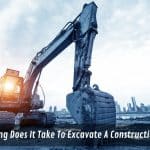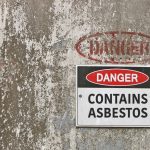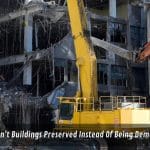Demolishing a building isn’t as easy as you may think and requires a licensed demolisher to carry out these works. There are certain elements of the work that can be dangerous therefore you need to speak to a professional demolisher or company such as Almighty Demolition who can assist with this process.
Demolishers completely or partly dismantle buildings and other structures using pre-planned and controlled methods. Their work often combines the structural demolition of load-bearing elements with the stripping of internal fixtures and fittings, services and non-load-bearing elements.
It’s high-risk construction work, but it doesn’t include:
- dismantling formwork, falsework, or other structures used to provide support, access, or containment during construction
- removing power poles, light poles, or phone poles.
Risks to both people and property:
- Demolition work can expose workers and the public to significant risks that may cause injury or death. These risks exist whether the work is undertaken at ground level or at heights. If the work is conducted above ground level, then fall protection equipment is required.
- Demolishers must consider not only the condition of the structure to be demolished, but also the structure’s proximity to adjacent buildings and other assets that the demolition work may adversely affect, and the condition of those adjacent structures and assets.
- preparing quotes to undertake demolition work
- consulting with endorsed building engineers on proposed demolition works and processes
- developing site‐specific demolition work plans
- applying for demolition permits
- establishing and administering contracts for the provision of demolition services
- the identifying site and work-related hazards, and developing risk management strategies (including identification of hazardous materials)
- arranging fall protection equipment
- establishing and managing an asbestos risk register (for commercial buildings and structures)
- identifying (in consultation with endorsed building engineers) suspended elements that may require propping
- undertaking manual demolition, including the dismantling, or demolishing and removing of materials and component parts of a building or structure
- removing fixtures and fittings, roofs, trusses, ceilings, external and internal walls, floors and floor support systems of small buildings and structures, and sorting materials for reuse and recycling
- arranging waste transportation, disposal and transfer to landfill or recycling depots, as appropriate to the site and client requirements
- undertaking the demolition and stripping of internal fittings and non‐load bearing elements of buildings up to five storeys.
Must do’s
There are specific laws about doing demolition work safely. Here we summarise those laws and give you some practical tips.
You may need to notify SafeWork NSW before they begin the work and advice that you intend to begin demolition work. You must also notify them five days before undertaking any demolition work that involves:
- the demolition of a structure more than six metres high
- load-shifting machinery (e.g., an excavator) on a suspended floor
- explosives.
Check for asbestos
Check the asbestos register before beginning demolition. If a register is not available, have a competent person inspect the structure for asbestos. Remove all asbestos before beginning demolition work.







